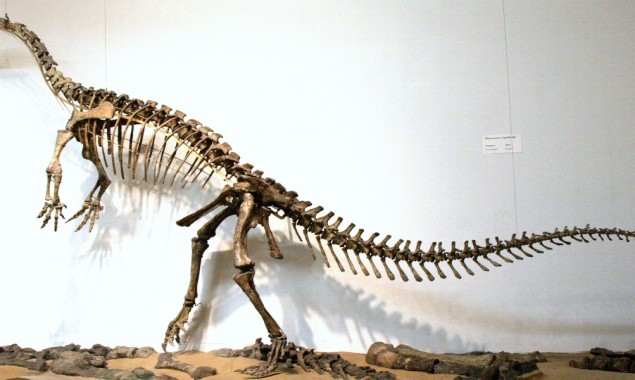Scientists accidentally create new fish from two endangered species
The "sturddlefish" was accidentally created by Hungarian scientists. This is a new...

Climate Change
It is known that land-dwelling dinosaurs were wiped out about 66 million years ago when an asteroid twice the diameter of Paris crashed into Earth.
The plunge in global temperatures causing a blanket of heat-shielding debris in the atmosphere became the reason behind dinosaurs’ extinction.
100 million years earlier, another climate change cataclysm devastated a different set of dinosaur species with many going extinct.
Scientists have found evidence of this traumatic event some 179 million years ago in plant fossils in Argentine Patagonia.
They also discovered a previously unknown dinosaur belonging to a species called Bagualia Alba. They belong to the family of massive, long-necked sauropods and are the largest animals to walk on Earth.
Before global warming occurred, sauropods were only a branch of the Sauropodomorpha lineage.
Other dinosaurs of the same group were smaller and lightly built. Some of them were no bigger than a goat.
Unfortunately, a series of volcanic eruptions transformed the vegetation dinosaurs fed on. Huge amounts of CO2 and methane were released in the atmosphere. The climate went from warm and humid with a diverse lush vegetation to a strongly seasonal, hot-and-dry regime.
Smaller Sauropodomorpha dinosaurs were unable to cope with the change, but larger sauropods like the Bagualia Alba thrived.
“Sauropods are massive, four-legged animals with long necks,” which meant they could reach the tops of trees”, palaeontologist and lead author Diego Pol told AFP.
“Their very robust mandibles and spoon-shaped teeth were adapted to feed on all kinds of plants such as conifer trees.” Conifers in the early Jurassic had tough and leathery leaves that would be a challenge for any herbivore.
Sauropods’ new diet saw resulted in expanded size from 10 metres to 40 metres in length.
They became the dominant group of herbivores and eventually the largest animals to ever walk the Earth.
Catch all the Sci-Tech News, Breaking News Event and Latest News Updates on The BOL News
Download The BOL News App to get the Daily News Update & Follow us on Google News.